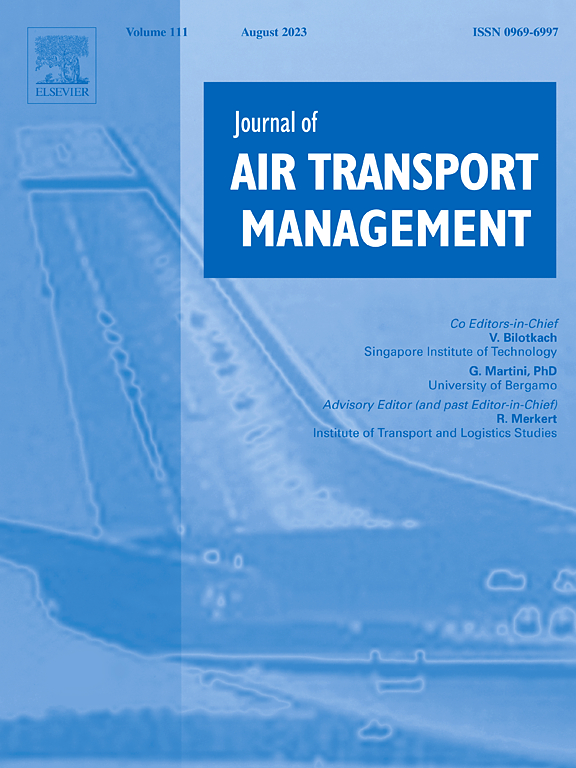空中交通管制的跨境能力共享:欧洲哪些区域管制中心是最佳候选者?
IF 3.6
2区 工程技术
Q2 TRANSPORTATION
引用次数: 0
摘要
在经历了COVID-19大流行造成的前所未有的交通低迷期后,欧洲的空中交通正在强劲复苏。空中交通管理(ATM)网络的各个部分再次出现严重的容量瓶颈,导致过度延误,并引起公众的明显兴趣。过去十年,跨境空中交通服务(ATS)的概念作为提高运力利用率的潜在解决方案受到关注。出现了两个关键的战略问题:预期的好处是什么?欧洲哪些区域控制中心(acc)是这种合作的最佳候选者?为了解决这些问题,我们开发了一个由数学模型支持的两阶段方法。结果显示,“超级空中交通管制主任”概念在网络层面上的潜在节省相当于300-350名空中交通管制主任(或7%),而不是在一天的运营中单独值班。然而,通过acc的最佳配对,已经可以实现高达74%的理论节约。我们的发现可以帮助决策者为早期采用者建立适当的激励机制。此外,在最近采用SES2+法规之后,开发的方法可以作为决策者和网络管理员加速ATS授权实施的宝贵战略资产。本文章由计算机程序翻译,如有差异,请以英文原文为准。
Cross-border capacity sharing in air traffic control: which area control centres in Europe are the best candidates?
Air traffic in Europe is recovering strongly after a period of unprecedented traffic downturn caused by COVID-19 pandemic. Significant capacity bottlenecks again occur in various parts of the Air Traffic Management (ATM) network, leading to excessive delays and attracting pronounced public interest. Over the past decade, the concept of cross-border ATS (Air Traffic Services) provision has come under the spotlight as a potential solution to enhance capacity utilization. Two key strategic questions arise: what are the expected benefits and which Area Control Centres (ACCs) in Europe are the best candidates for such cooperation? To address those, we developed a two-phase approach supported by mathematical models. Results suggest that the potential savings at network level from the “super-ATCO (Air Traffic Control Officer)” concept amount to 300–350 ATCOs (or 7 %) compared to individual rostering on a single day of operations. However, up to 74 % of such theoretical savings can already be achieved by means of optimal pairing of ACCs. Our findings may assist policy-makers in establishing adequate incentive mechanisms for early adopters. Moreover, the developed methodology can serve as a valuable strategic asset for decision-makers and Network Manager to accelerate the implementation of ATS delegation, following recent adoption of the SES2+ regulation.
求助全文
通过发布文献求助,成功后即可免费获取论文全文。
去求助
来源期刊

Journal of Air Transport Management
TRANSPORTATION-
CiteScore
12.40
自引率
11.70%
发文量
97
期刊介绍:
The Journal of Air Transport Management (JATM) sets out to address, through high quality research articles and authoritative commentary, the major economic, management and policy issues facing the air transport industry today. It offers practitioners and academics an international and dynamic forum for analysis and discussion of these issues, linking research and practice and stimulating interaction between the two. The refereed papers in the journal cover all the major sectors of the industry (airlines, airports, air traffic management) as well as related areas such as tourism management and logistics. Papers are blind reviewed, normally by two referees, chosen for their specialist knowledge. The journal provides independent, original and rigorous analysis in the areas of: • Policy, regulation and law • Strategy • Operations • Marketing • Economics and finance • Sustainability
 求助内容:
求助内容: 应助结果提醒方式:
应助结果提醒方式:


